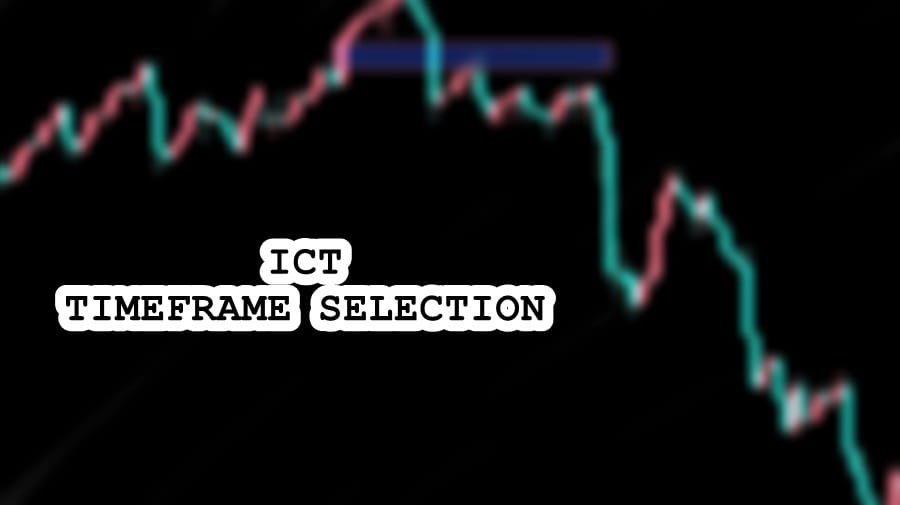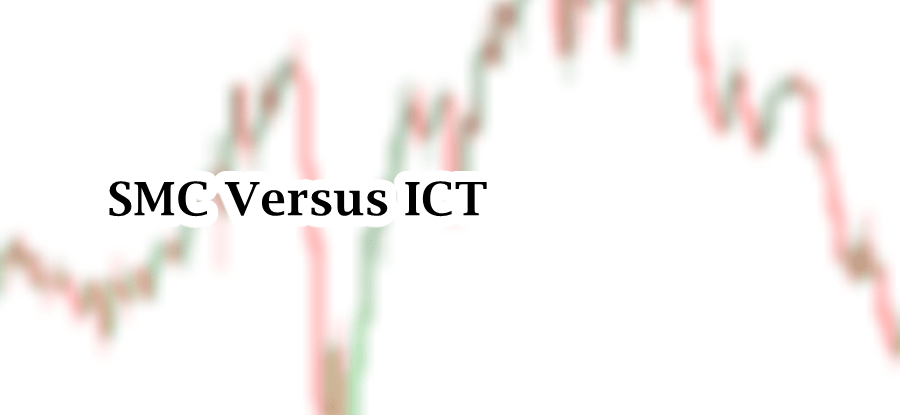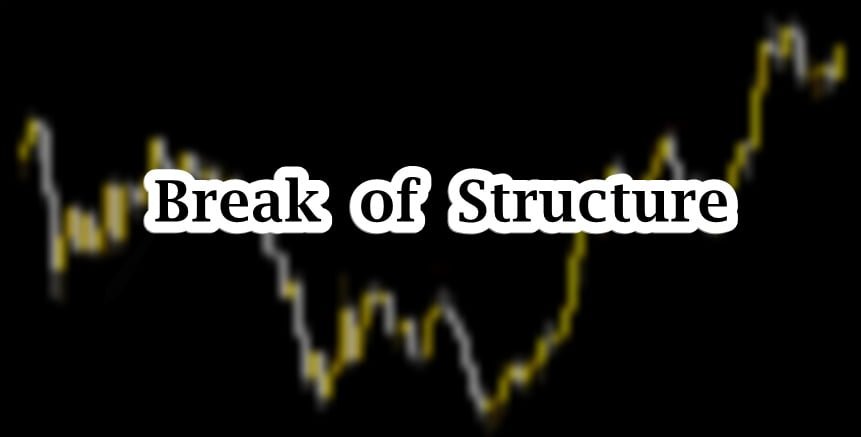
Table of Contents
Understanding price action behavior on different timeframes can be a complex task. In order to navigate the complexities of price action, timeframe selection is crucial step in ICT Market Analysis. For new traders, understanding price behavior on different timeframes seem daunting due to plethora of available timeframes.
This article explores essential and importance of timeframe selection, its primary function and professional perspective outlined by Michael J Huddlestone.
Understanding Timeframes
First step in trading financial market is going through an online software which contain charts of different financial securities. At first, everything seems complex especially when you go through different timeframes. Financial asset charts present multiple timeframes that cater to different trading style.
Higher timeframes like monthly, weekly, and daily charts provide a broader view of the market. In ICT Market analysis, Higher timeframes are used to identify institutional order flow and directional bias. These timeframes provide clear market structure and trends. In ICT Timeframe selection, there is a notion that institutional behavior on HTF is more logical and solid that on smaller timeframe.
Intraday timeframes like 4-hour, 1-hour and medium range timeframes are used for swing trading and offer a granular perspective for short term trading strategies. Trading with these timeframes require alignment with institutional order flow (identified with the help of HTF).
Smaller timeframes like 15 -min and other smaller timeframes are used for scalping or day trading. In these timeframes market represents high volatility and institutional activity is designed to capture more stop-losses and accumulate more order in their favor.
Primary Function of ICT Timeframe Selection
In ICT trading, the fundamental purpose of timeframe selection is to establish a structured method for analyzing price movements based on a trader’s preferred trading style.
Higher timeframes like monthly and weekly are used to understand institutional order flow and major market trend. These are the timeframes used in Position trading. Monthly and Weekly timeframes are used for order flow and daily is used to find entries in the market.
Medium timeframes such as daily and 4-hour timeframes are used in swing trading. Daily chart is used for market structure analysis and 1-hour is used to find entries in the market.
Lastly, there is a day trading and scalping. In day trading, smaller timeframes like 1-hour 15-min and 5 min are used for structured trading. In scalping, 15-min, 5 min and 1-min timeframe is used to find opportunities in the market.
Remember, ICT teachings focus on market structure, psychology, price action, and most importantly timing of trade setups. The choice of timeframe ultimately depends on individual trader preferences and experience.
Professional Perspective on ICT Timeframe Selection
Michael, the Inner Circle Trader, emphasizes the importance of using at least three timeframes to frame trades effectively.
Position Trading and Timeframes
Position trading involves long-term trade setups that span weeks to months. ICT suggest using three timeframes for structured trading. For position trading, Michael suggests using Monthly, Weekly, and Daily chart for framing position trading.
For every type of trading, having a broader perspective gives an edge over other others. In position trading Monthly timeframe is used to identify broader institutional order flow and overall higher timeframe market structure.
Weekly timeframe is a mid-level chart provides medium-term perspective for trading. This timeframe is used to monitor trades. Trade management is also emphasized by Inner Circle Trader.
Daily timeframe offers short-term view for identifying potential entries for position trading. By observing the overall market structure and order flow, daily timeframe is used to find potential reversal or continuation trend. Mid-level is used to monitor the trade effectively.
For example, if the monthly timeframe indicates a bullish trend nearing a key resistance level, the weekly chart can help confirm continuation or reversal patterns. The daily timeframe provides the finer details for entry timing.
Swing Trading and Timeframes
Swing trading involves capturing price moves that lasts several days to weeks. ICT suggest using three timeframes for structured swing trading. For Swing trading, Michael suggests using Daily, 4-hour, and 1-hour chart for framing swing trading setup.
For every type of trading, having a broader perspective gives an edge over others. In swing trading, Daily timeframe is used to identify broader directional bias and higher timeframe market structure.
4-hour timeframe is a mid-level chart provides medium-term perspective for trading. This timeframe is used to monitor trades. Trade management is also emphasized by Inner Circle Trader.
1-hour timeframe offers short-term view for identifying potential entries for swing trading. By observing the overall market structure and order flow, 1 hour timeframe is used to find potential reversal or continuation trend. Mid-level is used to monitor the trade effectively.
For example, if the daily timeframe indicates a bullish trend nearing a key resistance level, the 4-hour chart can help confirm continuation or reversal patterns. The 1-hour timeframe provides the finer details for entry timing.
Short-term Trading and Timeframes
Short-term trading focuses on holding trades for a few hours to a week ICT suggest using three timeframes for structured short-term trading. For short-term trading, Michael suggests using 4-hour, 1-hour, and 15-min chart for framing short-term trading.
In short-term trading, 4-hour timeframe is used to identify directional bias and trade premise. Along with that 4-hour market structure is crucial to mark.
1-hour timeframe is a mid-level chart provides medium-term perspective for trading. This timeframe is used to monitor trades. Trade management is also emphasized by Inner Circle Trader.
15-min timeframe offers short-term view for identifying potential entries for short-term trading. By observing the overall directional bias and market structure, 15-min timeframe is used to find potential entry opportunities. Mid-level is used to monitor the trade effectively.
For example, if the 4-hour timeframe indicates a bearish trend nearing a key resistance level, the 1-hour timeframe chart can help confirm key resistance areas. The 15-min timeframe provides the finer details for entry timing.
Day Trading and Timeframes
Day trading focuses trade execution and closing within the same trading day. ICT suggest using three timeframes for structured day trading. For day trading, Michael suggests using 1-hour, 15-min and 5-min chart for framing day trades.
In day trading, 1-hour timeframe is used to identify directional bias and trade premise. Along with that 1-hour market structure is crucial to mark.
15-min timeframe is a mid-level chart provides medium-term perspective for trading. This timeframe is used to monitor trades. Trade management is also emphasized by Inner Circle Trader.
5-min timeframe offers short-term view for identifying potential entries for day trading. By observing the overall directional bias and market structure, 5-min timeframe is used to find potential entry opportunities. Mid-level is used to monitor the trade effectively.
For example, during a bullish day, the 1-hour chart provides the trend direction, the 15-minute chart shows consolidation areas, and the 5-minute chart confirms a breakout for entry.
Key to Multiple Timeframe Market Structure
As a trader, it is advised by market professionals to focus on higher timeframe depending on the type of trader you are. Higher timeframe provides the foundational directional bias. In Position Trading, trades use monthly charts to determine long term market trends. In Swing trading, traders rely heavily on daily timeframe for trend direction. In Short term trading, traders use 4-hour for directional bias and market direction.
Along with the higher timeframes in each timeframe, mid-level timeframe are used for trade management. Mid-Level timeframes serves as a bridge between the HTF and STF. Mid-Level timeframes are used for monitoring ongoing trades, adjust stop-loss or take-profits levels, and evaluate the continuation of the trend.
In ICT trading, smaller timeframes are used for finding entry signals. The STFs in each type of trading are used for pinpointing entries and exits. It helps traders identify reversal in the market, continuation signals, and precision entries at key support or resistance levels.
High-probability trades, in each type of trading, must align with HTF direction. However, a trader must prepare himself for challenges that arises in live market trading. In challenging scenarios, traders must refine their entries and manage trades meticulously using the mid-level and smallest timeframes.
Final note
Mastering timeframe selection is a journey that requires consistent practice and market observation. Traders must align their strategies with their chosen timeframes. ICT principles offer a structured approach in trading. Micheal study of market structure enables us to master timeframe selection. However, trading success depends on individual psychology, experience, and risk management.
Trading forex and other financial markets involves significant risk and may result in substantial risk and sometime result in losses. It is advised not to use fund in trading that you cannot afford to lose. Seek advice from market professional before investing in financial markets.
Frequently Asked Questions (FAQs)
Why is timeframe selection important in trading?
In ICT Trading, timeframe selection for trading is extremely important. This helps traders structure their market analysis, identify trends, and align their strategies with their trading style. This ensures clarity and precision in decision-making.
How many timeframes can be used for trading?
According to Inner Circle Trader, three timeframes can be used to trade with overall order flow. Higher timeframe among them is used for directional bias, a mid-level for trade monitoring and management, and smaller timeframe among for them is used for precise entries.
Which timeframe is best for beginners?
Beginner traders should focus on higher timeframe like daily and 4-hour charts. These timeframes are considered as less noisy and provide a clearer view of market trends.
How does psychology impact timeframe selection?
A trader’s psychology determines their comfort level with different timeframes. Position trading requires patience, swing trading balances flexibility, and day trading needs quick decision-making.
Are ICT teachings suitable for all trading styles?
Yes, ICT teachings provide foundational concepts applicable to position trading, swing trading, and day trading. The choice depends on individual preferences and experience.
I’m Abdullah Shah, a content writer with three years of experience in crafting engaging and informative content. My background in market analysis complements my work, allowing me to create content that resonates with audiences. I’m also a seasoned practitioner in the forex and crypto markets, with a strong foundation and deep interest in finance. My passion for the financial world drives me to produce content that is both insightful and valuable for those interested in understanding market trends and financial strategies.





